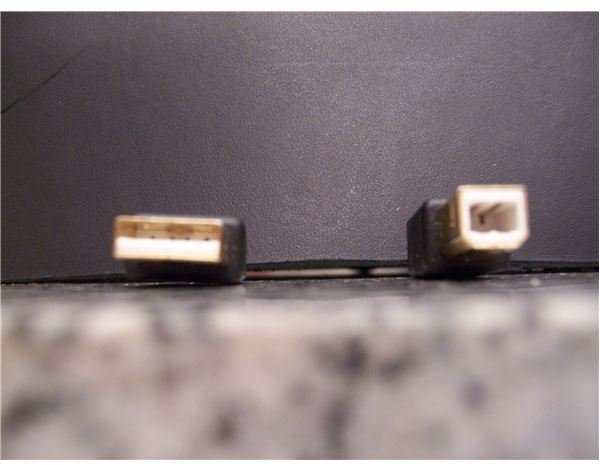Computer Cables Guide - Computer Cable Management
Plugging In
Getting a computer and its peripherals (keyboard, screen, printer, etc.) to work requires connecting many different cables. Sometimes, only one will do to the trick, and the challenge is making sure you have exactly the right one and connecting it properly. At other times, however, you have options as to which cable to use. Having options may seem nice, and it is in a pinch. But usually one option is better, and the others are just making due. You need to choose the best one, then do everything right.
- You can see a picture, highlighting the different ports at the back of the computer, and explanations of what they are for, here.
- You will be seeing a lot of USB cables, since they can be used for just about everything.
- Sometimes, a legacy connector (PS/2, Serial) is preferable or necessary.
Though USB is a popular external storage connection, it isn’t a very good one.
External Drive Cables
This is one of the situations where you have many choices, but some are better than others.
- You can use USB, but it isn’t really fast enough. Also, it often uses 2 ports to power a drive.
- FireWire is faster, but it is expensive and getting hard to find.
- eSATA has plenty of speed, but can’t deliver power to a drive.
Another facet of dealing with cables is that, like in all things computing related, change is the only constant. New versions of all of these connectors are on their way, arriving as soon as the end of this year. FireWire S3200, USB 3.0, SATA 6, and power over SATA are discussed here.
SATA is not used just for external drives. Let’s talk about the cables found inside the computer.
Internal Computer Cables
eSATA’s speed advantage is based on the fact that it offers a connection identical (electronically if not physically) to what SATA offers internally.
- SATA has replaced IDE when connecting internal drives because of speed and ease of use.
- SATA drives are also used in servers, as they are compatible with SAS controllers.
While we are inside the computer, we’ll look at some of the other cables in here.
- Many cables come from the power supply unit (PSU) to deliver electricity to the computer’s components. The most important are the cables connecting the PSU to the motherboard. The motherboard then delivers powers to some components not powered directly by the PSU.
- Ports on the PC case for the external cables discussed above (USB, FireWire, eSATA) need to be connected to the motherboard internally.
- Other features of the case, such as audio jacks, switches, and lights, require connection to the motherboard.
- Some graphics cards require more power than can be delivered via the slot they are in. These video cards use special connectors, directly from the PSU, to get the required power.
- Other Power Supply Unit connectors are explained here, with pictures.
Though not cables, PCI and PCI-E are connection interfaces. While we have the case open and are talking about graphics cards, it is best to understand expansion slots as well.
- Though no longer used for graphics cards, PCI is still viable for many expansion cards.
- Graphics cards now use the PCI-Express interface. PCI-E slots differ in size and performance based on number of lanes.
You’ve hooked up just about everything except your monitor…
Cables for Video Screens
Hooking up a monitor used to involve very few options. While we have lost that simplicity, we have gained not only a far better picture, but some interesting features:
- VGA is inferior to DVI but it is generally only worth upgrading a cable where you already have a DVI monitor and card.
- In terms of video quality: HDMI cable is about as good as DVI cable, and both are better than VGA and other analog alternatives.
- HDMI has several features that make it better than DVI, particularly if connecting a PC to a home theater.
- A third cable with comparable video quality is appearing on some computer equipment. DisplayPort currently only benefits manufacturers.
- Features, like carrying data for monitor-integrated microphones and webcams, or thinner, smaller, more power efficient, “Direct Drive” monitors, could make DisplayPort more attractive… if implemented.
